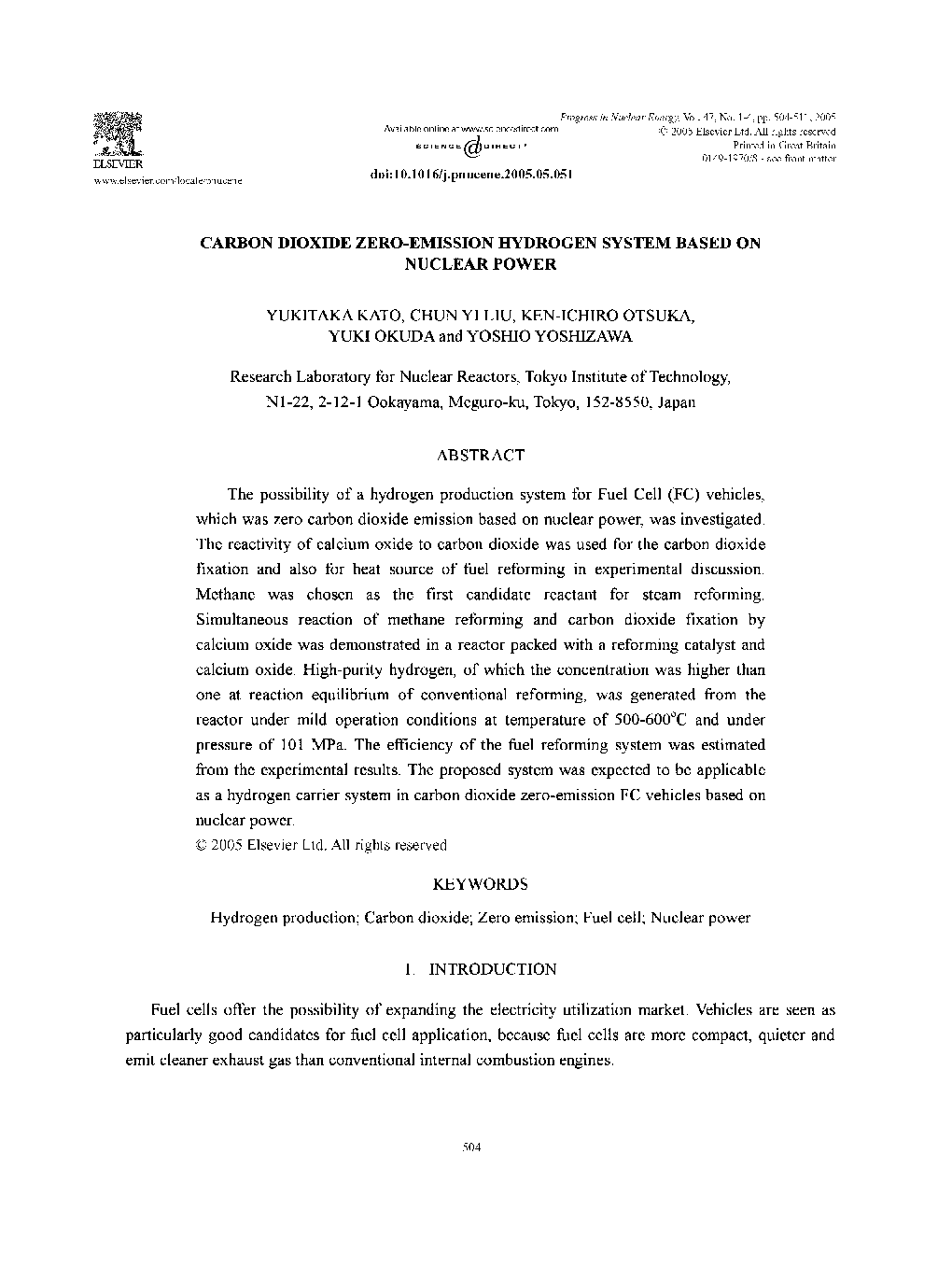| Article ID | Journal | Published Year | Pages | File Type |
|---|---|---|---|---|
| 9825434 | Progress in Nuclear Energy | 2005 | 8 Pages |
Abstract
The possibility of a hydrogen production system for Fuel Cell (FC) vehicles, which was zero carbon dioxide emission based on nuclear power, was investigated. The reactivity of calcium oxide to carbon dioxide was used for the carbon dioxide fixation and also for heat source of fuel reforming in experimental discussion. Methane was chosen as the first candidate reactant for steam reforming. Simultaneous reaction of methane reforming and carbon dioxide fixation by calcium oxide was demonstrated in a reactor packed with a reforming catalyst and calcium oxide. High-purity hydrogen, of which the concentration was higher than one at reaction equilibrium of conventional reforming, was generated from the reactor under mild operation conditions at temperature of 500-600°C and under pressure of 101 MPa. The efficiency of the fuel reforming system was estimated from the experimental results. The proposed system was expected to be applicable as a hydrogen carrier system in carbon dioxide zero-emission FC vehicles based on nuclear power.
Related Topics
Physical Sciences and Engineering
Energy
Energy Engineering and Power Technology
Authors
Yukitaka Kato, Chun Yi Liu, Ken-Ichiro Otsuka, Yuki Okuda, Yoshio Yoshizawa,
